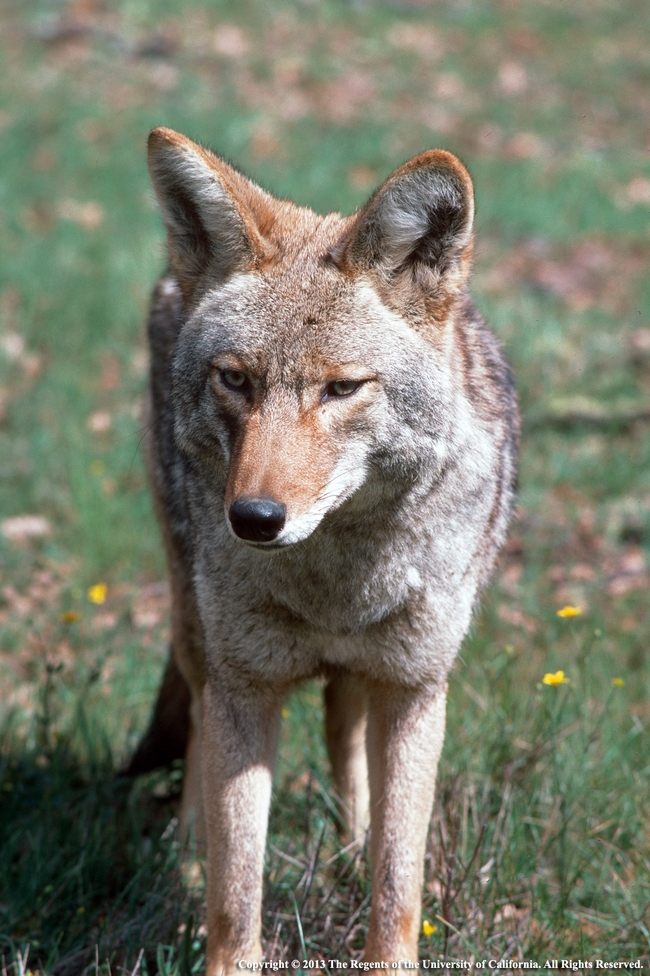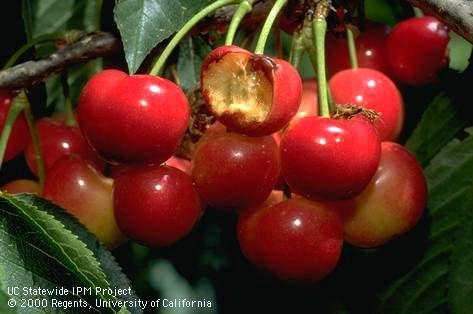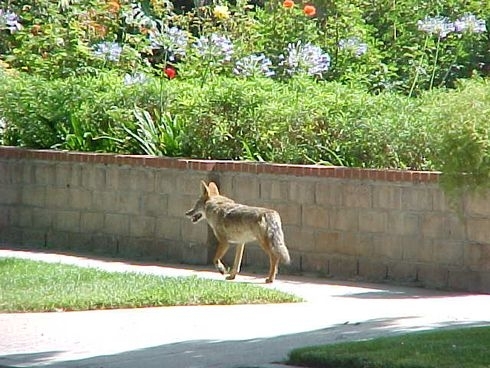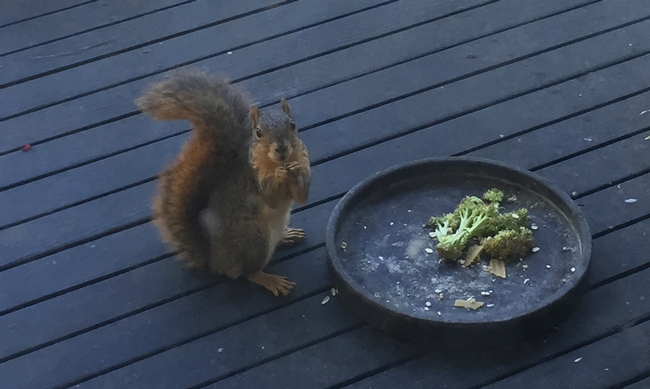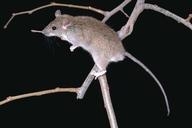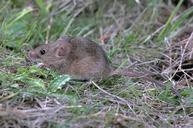Posts Tagged: Niamh Quinn
Experts converge in March to discuss human-wildlife conflict resolution
The Vertebrate Pest Conference is held every two years, usually in California, in cooperation with the Pesticide Applicators Professional Association (PAPA). The leading authorities with vertebrate management expertise from around the world congregate to present the latest research and extension information.
The conference is intended for animal control officials, wildlife managers, agricultural producers, pest control advisers, consultants, educators, researchers and natural resource managers. California Department of Pesticide Regulation and California Department of Public Health continuing education units are available for participants. Special symposia at the conference include bird, wild pig, and urban coyote management.
At the Vertebrate Pest Conference, experts will share the latest information about coyote attacks, human-coyote conflicts, and present several talks on coyote management, including hazing.
Niamh Quinn, a UC Cooperative Extension vertebrate pest advisor based at the UC South Coast Research and Extension Center in Orange County, is one speaker on the growing problem of urban coyotes. With over 3 million people in Orange County, 8 state parks and beaches, countless city parks and 19 county parks and wilderness areas, conflicts with urban coyotes are bound to happen. Managing coyotes includes managing people's behavior too.
“We can't manage what we can't measure. This conference provides a unique opportunity to discuss ongoing conflicts, especially those related to urban coyote management," Quinn said. "Research is needed to understand urban coyote behavior and if these behaviors are changing as a result of the way we are currently living. Outreach is needed to instruct urbanites on appropriate behavior where coyote conflicts are occurring, and managing coyotes is everyone's concern. We need better and improved strategies for measuring and managing these conflicts.”
Vertebrates are also problematic in commercial agriculture. A 2011 survey of wildlife damage by UC Cooperative Extension specialist on human-wildlife conflict resolution, Roger Baldwin, said agricultural losses from wildlife damage in California is likely in excess of $1 billion annually. Based on the survey results, economic losses were greatest for voles and pocket gophers in alfalfa; and wild pigs, birds, and ground squirrels in nut crops.
One talk at the Vertebrate Pest Conference will be a North American overview of bird damage in fruit crops. Other presentations cover field rodent repellents, food safety, and trapping.
UC IPM has information on vertebrate pest management for urban and communities, as well as commercial agriculture.
Southern California grapples with increasing number of coyotes
Coyotes are much more abundant now in urban areas of Southern California than they have ever been before, reported in the Long Beach Business Journal. For the story, the Journal interviewed UC Agriculture and Natural Resources emeritus Cooperative Extension specialist Bob Timm in their Long Beach offices.
Timm, who served as director of the UC Hopland Research and Extension Center in Mendocino County, has 27 years of experience dealing with coyote management.
Timm said coyotes can find ample food in suburban and urban areas by scrounging through garbage and compost piles, eating pet food and even small dogs and cats. Water is available in ponds, birdbaths and pools. Some people intentionally feed coyotes.
“The difficulty is there is so little research on coyotes in suburban and urban areas because it is so hard to do,” Timm said.
Research conducted in the early 2000s by Timm and a Cal Poly Pomona professors found that coyotes habituate in urban areas in a predictable manner than can be observed along the following seven steps:
- Increased coyote presence on streets and in yards at night
- An increase in coyotes non-aggressively approaching adults and/or taking pets at night
- Coyotes present on streets or in parks and yards during morning or afternoon hours
- Coyotes chasing or taking pets in the daytime
- Coyotes attacking or taking pets while they are on a leash or near their owners, and coyotes chasing joggers, bicyclists, and other adults
- Coyotes present around children's play areas, schools or parks in the midday hours
- Coyotes acting aggressively toward adults in midday hours
“One of those steps is they start attacking and killing pets,” Timm said. “When they start doing that in the daytime, then it becomes very problematic and some of those coyotes are eventually going to become aggressive toward people."
According to Niamh Quinn, the UC ANR Cooperative Extension area vertebrate pest advisor, based at the UC ANR South Coast Research and Extension Center, there were six recorded coyote bites on humans in Irvine this year.
Don’t feed wild animals, says UC ANR pest expert
Did you know that it is illegal to feed wildlife? As tempting as it is to put out bread crumbs for birds or deer chow for Bambi, there are downsides to feeding wild animals, says a UC Agriculture and Natural Resources expert in human-wildlife conflict resolution.
California law states: “Except as otherwise authorized in these regulations or in the Fish and Game Code, no person shall harass, herd or drive any game or nongame bird or mammal or fur-bearing mammal. For the purposes of this section, harass is defined as an intentional act that disrupts an animal's normal behavior patterns, which includes but is not limited to, breeding, feeding or sheltering. This section does not apply to a landowner or tenant who drives or herds birds or mammals for the purpose of preventing damage to private or public property, including aquaculture and agriculture crops.”
Feeding wild animals may help non-native, invasive, nuisance and feral animals survive, says Niamh Quinn, UC ANR Cooperative Extension advisor in San Diego and Los Angeles counties.
“Many of these species have public health risks associated with them, which can cause serious illness in humans,” Quinn said. “Rats and squirrels carry fleas that transmit plague and feral cats also carry fleas that carry typhus. Both of these diseases can be transmitted to people and cause serious illness, or even death.”
During the summer of 2015, two tourists at Yosemite National Park contracted plague, but humans are not the only ones at risk from disease. Wildlife can also become more exposed to disease as a result of people feeding them.
The Pacific Flyway is a major north-south flyway for migratory birds in America, extending from Alaska to Patagonia. As part of the Pacific Flyway, California is a temporary home for many species of birds. Due to people feeding them, some of these birds no longer naturally migrate.
“Unfortunately, when we feed birds at parks with lakes and ponds, we are encouraging these unnatural situations and not helping the health of these bird populations,” Quinn said. “This can cause unnatural numbers of water fowl to congregate in ponds, rivers and lakes and creates perfect conditions for avian botulism and cholera to take hold. Bird die-offs can occur naturally in wilderness areas and are prominent in drought conditions due to low water resources.
Sustaining nonnative and feral animals can also have negative impacts on native wildlife, she said.
“For example, the eastern fox squirrel, which has now been released in many cities in the state, is competing with the native western gray squirrel,” said Quinn. “Sustaining the nonnative and invasive eastern fox squirrel could further aid in its distribution in the state, which would spell disaster for the native gray squirrel.”
Leaving nuts and seeds out for squirrels can also encourage other nonnative wildlife like roof rats and house mice.
“Not only do these species have public health issues associated with them, they also compete with native wildlife,” Quinn said. “They prey on bird eggs and can compete with native rodents for food resources.”
Indirect feeding of wildlife can also lead to serious conflicts between people and wildlife, Quinn warned.
“Bears that become accustomed to human food often have to be trapped and re-released and some are even euthanized,” Quinn said. “Coyotes are now common-place in some of our cities in California. Relying on human food could cause habituation of these wild animals and cause conflicts to rise. It is important that we cover our trash cans and make sure that we keep wildlife out of them.”
The California Department of Fish and Wildlife has an initiative called “Keep Me Wild” with the slogan “Wild animals don't need your handouts. They need your respect.” Quinn urges people to consider the long-term welfare of wildlife the next time they are tempted to feed wild animals.
For more information about managing pests around homes, visit the UC ANR Statewide Integrated Pest Management Program website: http://www.ipm.ucanr.edu/PMG/menu.homegarden.html.


